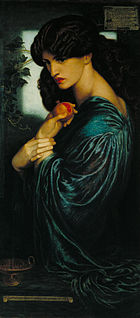
The Pre-Raphaelite Brotherhood was a group of English painters, poets, and art critics, founded in 1848 by William Holman Hunt, John Everett Millais, Dante Gabriel Rossetti, William Michael Rossetti, James Collinson, Frederic George Stephens and Thomas Woolner who formed a seven-member "Brotherhood" modelled in part on the Nazarene movement. The Brotherhood was only ever a loose association and their principles were shared by other artists of the time, including Ford Madox Brown, Arthur Hughes and Marie Spartali Stillman. Later followers of the principles of the Brotherhood included Edward Burne-Jones, William Morris and John William Waterhouse.

Vorticism was a London-based modernist art movement formed in 1914 by the writer and artist Wyndham Lewis. The movement was partially inspired by Cubism and was introduced to the public by means of the publication of the Vorticist manifesto in Blast magazine. Familiar forms of representational art were rejected in favour of a geometric style that tended towards a hard-edged abstraction. Lewis proved unable to harness the talents of his disparate group of avant-garde artists; however, for a brief period Vorticism proved to be an exciting intervention and an artistic riposte to Marinetti's Futurism and the post-impressionism of Roger Fry's Omega Workshops.
The Norwich School of painters was the first provincial art movement established in Britain, active in the early 19th century. Artists of the school were inspired by the natural environment of the Norfolk landscape and owed some influence to the work of landscape painters of the Dutch Golden Age such as Hobbema and Ruisdael.
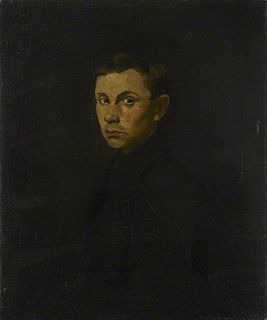
Benjamin Lauder Nicholson, OM was an English painter of abstract compositions, landscape and still-life.
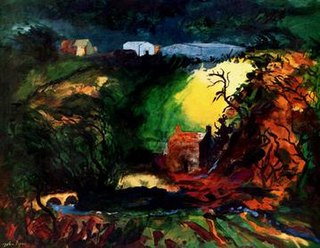
John Egerton Christmas Piper CH was an English painter, printmaker and designer of stained-glass windows and both opera and theatre sets. His work often focused on the British landscape, especially churches and monuments, and included tapestry designs, book jackets, screen-prints, photography, fabrics and ceramics. He was educated at Epsom College and trained at the Richmond School of Art followed by the Royal College of Art in London. He turned from abstraction early in his career, concentrating on a more naturalistic but distinctive approach, but often worked in several different styles throughout his career.

English art is the body of visual arts made in England. England has Europe's earliest and northernmost ice-age cave art. Prehistoric art in England largely corresponds with art made elsewhere in contemporary Britain, but early medieval Anglo-Saxon art saw the development of a distinctly English style, and English art continued thereafter to have a distinct character. English art made after the formation in 1707 of the Kingdom of Great Britain may be regarded in most respects simultaneously as art of the United Kingdom.
Graham Vivian Sutherland was an English artist known for his work in multiple media and as a painter of portraits. His work was much inspired by landscape and religion, and he designed the tapestry for the re-built Coventry Cathedral.

Paul Nash was a British surrealist painter and war artist, as well as a photographer, writer and designer of applied art. Nash was among the most important landscape artists of the first half of the twentieth century. He played a key role in the development of Modernism in English art.

Edward Alexander Wadsworth was an English artist, closely associated with modernist Vorticism movement. He painted coastal views, abstracts, portraits and still-life in tempera medium and works printed using wood engraving and copper. In the First World War he designed dazzle camouflage for the Royal Navy, and continued to paint nautical themes after the war.
Events from the year 1952 in art.

George Vernon Meredith Frampton was a British painter and etcher, successful as a portraitist in the 1920s–1940s. His artistic career was short and his output limited because his eyesight began to fail in the 1950s, but his work is on display at the National Portrait Gallery, Tate Gallery and Imperial War Museum.
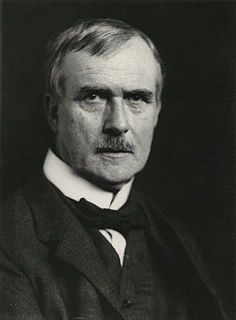
Philip Wilson Steer was a British painter of landscapes, seascapes plus portraits and figure studies. He was also an influential art teacher. His sea and landscape paintings made him a leading figure in the Impressionist movement in Britain but in time he turned to a more traditional English style, clearly influenced by both John Constable and J. M. W. Turner, and spent more time painting in the countryside rather than on the coast. As a painting tutor at the Slade School of Art for many years he influenced generations of young artists.
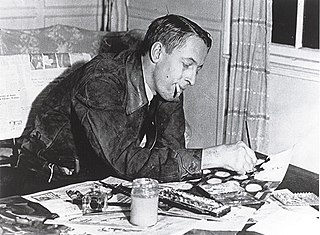
Edward John Burra was an English painter, draughtsman, and printmaker, best known for his depictions of the urban underworld, black culture and the Harlem scene of the 1930s.

Apparition of Face and Fruit Dish on a Beach (1938) is a painting by the Spanish surrealist Salvador Dalí. This work belongs to a group of paintings by Dalí that instantiate an optical illusion called the double, multiple, or ambiguous image.
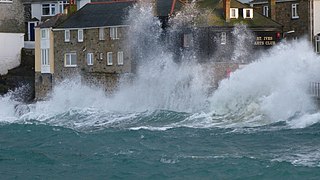
The St Ives School refers to a group of artists living and working in the Cornish town of St Ives. The term is often used to refer to the 20th century groups which sprung up after the First World War around such artists as Borlase Smart, however there was considerable artistic activity there from the late 19th Century onwards.

John Currie was an English painter and murderer. Born in Staffordshire, the illegitimate son of an Ulster-Scottish father who was a 'navvy' working on the railways and an English mother, he worked as an artist in the Potteries, painting ceramics, before going to the Royal College of Art in 1905, and later becoming Master of Life Painting at Bristol. He married in 1907. In the summer of 1910 he briefly attended the Slade School of Art, where he joined the 'Neo-Primitive' group that included fellow Slade students Mark Gertler, C.R.W. Nevinson, Edward Wadsworth, Stanley Spencer and Adrian Allinson. The contemporary art collector Michael Sadleir described him as 'blazing with genius'; others likened him to a character in a Dostoevsky novel.
The Allied Artists Association (AAA) was an art exhibiting society based in London in the early 20th century.
Richard Ernst Eurich, OBE, RA was an English painter who worked as a war artist to the Admiralty in the Second World War and was also known for his panoramic seascapes and narrative paintings. These were often invested with a sense of mystery and wonder which have tended to set him apart from mainstream development of art in the twentieth century.

Belshazzar's Feast is an oil painting by British painter John Martin (1789–1854). It was first exhibited at the British Institution in February 1821 and won a prize of £200 for the best picture. It was so popular that it needed to be protected from the crowds by a railing, and established Martin's fame. In the words of Martin's biographer William Feaver, he "turned literary references to visual reality". Martin published mezzotint engravings in 1826 and 1832. The original painting is now held in a private collection; two smaller contemporaneous "sketches" are held by the Yale Center for British Art in New Haven, Connecticut and the Wadsworth Atheneum in Hartford, Connecticut.
Alexander Hollweg was a British painter and sculptor.














